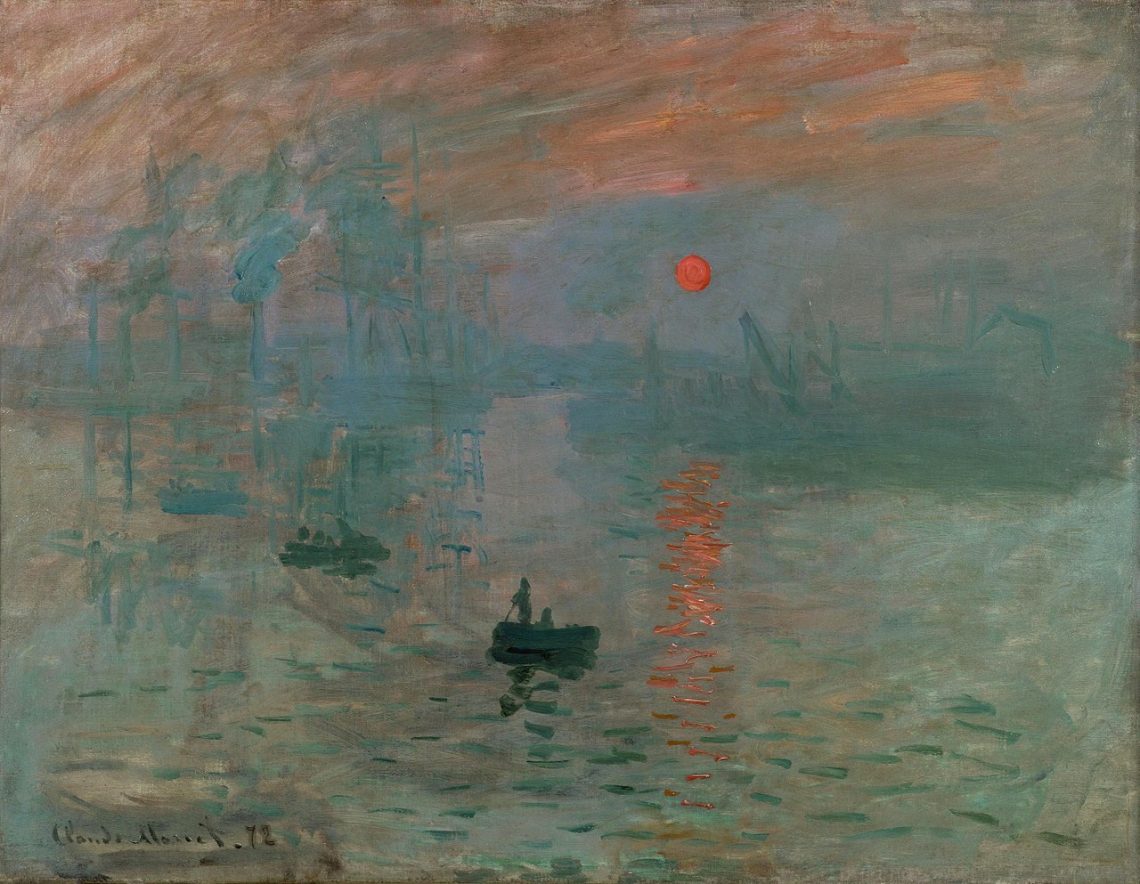Claude Monet was a founder of impressionist painting; in fact, the very term ‘Impressionism’ is derived from the title of this painting, Impression, Sunrise. Although his rapid brushstroke technique was considered shocking for the time, it has established Monet as one of the greatest impressionist painters and a master of capturing a fleeting moment in time. In this article, Singulart will explore Monet’s background, the significance of Impression, Sunrise and its contribution to the impressionist scene, and the legacy that Monet leaves behind.
Who was Claude Monet?
Claude Monet was born on November 14, 1840, in the 9th arrondissement of Paris. After moving to Le Havre with his family in 1845, he was pressured by his father to follow in the family business of ship-handling, but Monet instead followed his dreams of becoming an artist. In 1851 he began studies at Le Havre secondary school of the arts.

When travelling to Paris, Monet noticed other arts students copying pieces from the great masters. He took a different approach, preferring to sit at a window and paint what he saw. His studies were interrupted when he was drafted into the First Regiment of the African Light Cavalry; although his wealthy father had the opportunity to pay for Monet’s exemption from conscription, he refused to do so after Monet refused to give up painting. After a year of service, Monet contracted typhoid fever and went absent without leave.
Monet’s aunt, whom he was living with at the time, agreed to support Monet’s exemption if he agreed to undertake an art course, so in 1862 he became a student of Charles Gleyre. Together with fellow artists Renoir, Bazille and Sisley, Monet explored the effects of painting en plein air, forming the basis of Impressionism.
After the death of his beloved wife Camille in 1879, Monet moved to Giverny. The surrounding landscapes provided inspiration for Monet’s famous garden series, which continued until his death in 1926.
Monet: The Father of Impressionism
The Impressionist movement was born when artists wanted to show their work without the approval of the French art academy. Along with Renoir, Pissarro, and Manet, Monet founded the Cooperative and Anonymous Association of Painters, Sculptors and Engravers. It was then they decided to hold their own art show, free of the constraints of the government-organized salons.
The first show, L’Exposition des Révoltés, was held in April 1874, featuring Monet and 29 other artists. While the show was not a critical success, it was the first time Monet and his peers were referred to as “Impressionists” – although the name was meant to be insulting, the group embraced it. Monet often took the brunt of the criticism leveled at the impressionist movement, as he was its most outspoken advocate and his paintings, more than any others, captured the essence of Impressionism.
Significance of Impression, Sunrise
Painted in 1872, Impression, Sunrise was one of the paintings Monet showed at the inaugural Impressionist salon. The painting shows a harbor in Le Havre, with the sun rising over the anchored ships. It was painted by Monet in one sitting, with his technique of looking out the window and simply drawing what he saw.

Monet has been commended for his use of color in Impression, Sunrise. The bright orange of the sun makes it an obvious focal point, and critics have debated whether the sun was rising or setting (in 2014 the Marmottan Museum determined that it was, in fact, rising, thanks to their extensive study of tides, weather reports and celestial trajectories). Although the sun may seem like the brightest spot in the painting, in terms of photographic brilliance, it is on the same level as the grey hue of the water.
The loose brushstrokes of Impression, Sunrise strayed from the more traditional landscapes of the time. The aim of Impression, Sunrise was not to paint a realistic view of the harbor; instead, his style of painting suggests the impressions he felt while looking out the window at the view. The docks in the background are represented by just a few brushstrokes, and in some places the canvas is still visible; rather than striving for realism, Monet was attempting to capture and preserve a certain moment in time.
Reactions to Impression, Sunrise
At the time, Monet’s approach to landscapes was shocking; even offensive to those who would not believe he would leave artworks looking unfinished. The Neoclassical movement was de rigueur, and it was highly unusual for a work to stray away from using the traditional rules of composition.
Impression, Sunrise was mentioned by only five reviews, as many of the reviews of L’Exposition des Révoltés focused on the exhibition as a whole. Louis Leroy was perhaps the most vocal critic of Impression, Sunrise, writing “Wallpaper in its embryonic state is more finished!”. The artists were dismissed as “painters of mere impressions”, and so became known as the Impressionists.
However, among his contemporaries, Monet was praised and revered. His friend Cézanne remarked the Monet “was only an eye, but good Lord, what an eye!”, and journalist Theodore Duret claimed “Monet is the Impressionist painter par excellence… Monet transmits a singularly lively and striking sensation of the observed scene.”
The lasting legacy of Monet and Impression, Sunrise
Monet has since established his place as one of the true masters of Impressionist art. Impression, Sunrise is lauded as one of the finest examples of Impressionism, exemplifying the movement as a whole through the dreamy, hazy landscape.
Impressionism would go on to inspire art movements such as Abstract Expressionism, Pop Art and Minimalism. Artists like Rothko and Pollock were inspired by Monet’s work, and Warhol stated he was inspired by Monet’s haystack paintings.
Impression, Sunrise has since been recognized as a turning point of a cultural movement and as an example of Monet’s great mastery in light, color and capturing a fleeting moment in time.


















